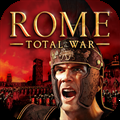Clash Royale Disturbed Graves Challenge - Theria Games

Introduction to the Disturbed Graves Challenge
The Clash Royale Disturbed Graves Challenge brings a haunting twist to battles, fitting perfectly with its spooky, Halloween-themed setting. As the second challenge of Season 52, this event introduces a unique mechanic where skeletons and other undead creatures continuously emerge onto the battlefield, adding an unpredictable element to every match.
To succeed, players must adapt their strategies and carefully construct their decks to counter the relentless waves of summoned units. The challenge concludes at 12 wins, with a special banner awarded to those who complete it. Designed to provide a fair and balanced competition, the event ensures that all participants have an equal opportunity to showcase their skills. Prepare to face the undead and refine your tactics in the Disturbed Graves Challenge!
Challenge Mechanics
The Disturbed Graves Challenge in Clash Royale introduces a unique and exciting battlefield mechanic involving special tombstones that continuously generate troops. These tombstones come in two distinct types, each with its own effect on the game and requiring players to adapt their strategies accordingly.
The first type of tombstone is the Giant Tombstone. This structure remains on the battlefield throughout the entire match and periodically spawns Guards to help push forward. The Giant Tombstone has a large health pool, making it a durable presence that can influence the pacing of the match. However, when it is destroyed, it releases a powerful Skeleton King, who joins the battle and provides additional support to your forces. This makes the Giant Tombstone an important tactical asset, as it not only supports your pushes but can also transform into a formidable force if destroyed by the enemy.
The second type is the Regular Spawning Tombstone, which appears randomly on the battlefield and continuously generates Skeletons while it is active. Unlike the Giant Tombstone, the Regular Spawning Tombstone does not remain on the field for the entire match. It can appear anywhere and spawn skeletons at regular intervals, creating a steady stream of distractions and pressure for your opponent. When this tombstone is destroyed, it releases a Royal Ghost, further complicating the battlefield by introducing an elusive and hard-to-target unit. This random nature of the Regular Spawning Tombstone adds a layer of unpredictability to the battle, making it essential for players to stay alert and adapt quickly to the changes in the game.
Mastering these mechanics is key to succeeding in the Disturbed Graves Challenge. The continuous influx of spawned units can dramatically influence the outcome of battles. Players must carefully manage their battlefield control and anticipate the appearance of new tombstones. Strategic placement of units and careful timing of attacks will be crucial in overcoming the constant pressure created by these tombstones. For instance, deploying troops in the right location can allow you to counteract or capitalize on the units that spawn from the tombstones.
Spells can also play a significant role in managing the tombstone mechanics. The Freeze spell, for example, can temporarily halt the spawning of troops from the tombstones, providing a brief respite to execute offensive maneuvers. On the other hand, Poison can be an effective counter to the Giant Tombstone, as it deals continuous damage to the tombstone and its surrounding units, gradually wearing down the structure’s health. Utilizing these spells strategically can help you maintain control over the battlefield and disrupt the opponent’s plans.
In addition to spell usage, deck-building decisions are crucial. A well-rounded deck that can quickly handle the constant stream of spawned units while maintaining offensive pressure is vital. Cards that can clear swarms of skeletons or deal with high-health tanks like the Skeleton King will be essential for a successful strategy. Flexibility in deck composition and adapting to the flow of the match are key components of success in the Disturbed Graves Challenge.
In conclusion, the Disturbed Graves Challenge is a dynamic and strategic experience that requires careful management of the battlefield’s evolving conditions. With the right combination of spells, strategic placement, and deck composition, players can gain the upper hand in this unique challenge, turning the constant emergence of undead troops into an advantage.
Best Decks and Card Considerations
The Disturbed Graves Challenge in Clash Royale requires careful deck-building to counter the constant troop spawns from tombstones. One effective deck for this challenge is Lumberloon Freeze, which features lumberjack and balloon as its primary win condition. The rage effect from the lumberjack helps the balloon reach the tower faster, making it a strong offensive combo. Defensive support comes from bowler, baby dragon, and electro dragon, all of which provide splash damage to handle the frequent skeleton and guard spawns. Electro dragon’s chain lightning can also hit multiple targets, including tombstones and towers. The freeze spell can secure tower damage and disrupt defenses, especially in double elixir when combining it with a lumberjack and balloon push.
Another notable card for this challenge is mother witch, whose ability to convert spawned skeletons into royal hogs makes her particularly effective. She can be used as a bait card, forcing opponents to overspend on defense, and may even be a better choice than electro dragon in some deck compositions.
When constructing a deck for this challenge, key considerations include:
Splash damage: Since spawned units appear frequently, cards like bowler, executioner, baby dragon, electro dragon, and valkyrie are valuable for clearing them efficiently.
Air troops: Most spawned units are ground-based, so incorporating baby dragon or skeleton dragons can provide a strategic advantage.
Reliable win conditions: Cards like balloon, hog rider, and graveyard work well when supported by strong defenses and spells.
Spells for control:
Tornado pulls units together for splash attacks.
Freeze stops defensive troops and tombstone spawns.
Poison controls areas and damages units near tombstones.
The log and barbarian barrel deal with small units like skeletons and guards.
Arrows clear swarms efficiently.
Earthquake can be effective in hog rider decks.
Strong defensive cards: Mega knight and valkyrie can handle multiple spawned troops while supporting counter-pushes.
Fast cycle decks: Hog rider and X-bow cycle decks can be viable, ensuring constant pressure.
Some potential deck compositions include:
Mother witch, bowler, valkyrie, the log, earthquake, arrows, firecracker, tornado.
Bowler, baby dragon, electro dragon, tornado, barbarian barrel, lumberjack, rocket, electro giant.
Executioner, bowler, fire spirit, baby dragon, poison, tornado, arrows.
Hog rider, bowler, executioner, firecracker, mega knight.
Bats, skeleton army, poison, goblin gang, dart goblin, hog rider, princess, mega knight.
X-bow, fireball, the log, knight, wizard, skeletons.
Hog rider, bomb tower, firecracker, earthquake, spear goblins, zap, knight, ice spirit.
Electro wizard, mother witch, valkyrie, bats, furnace, firecracker, barbarian barrel, the log.
Electro dragon, dart goblin, rage, the log, baby dragon, princess, skeleton dragons, lumberjack.
The best deck choice depends on your playstyle and available card levels. Prioritizing splash damage, considering mother witch, and using a strong win condition can significantly improve your chances of success. As the challenge progresses, be prepared to adapt your deck to shifting strategies and counter popular choices in the meta.
Gameplay Strategies and Tips
The Disturbed Graves Challenge in Clash Royale requires a mix of patience, defensive play, and well-timed offensive pushes to succeed. In single elixir time, it’s often best to play passively, allowing spawned troops to cancel each other out while focusing on efficient defenses. Many successful strategies revolve around playing defensively and then counter-pushing, making it important to capitalize on opponent misplays and overcommitments. Controlling the battlefield by fighting on your side of the arena can also be advantageous, as it allows your towers to assist in dealing with spawned troops before they become a threat.
To handle the continuous spawning of guards, skeletons, and royal ghosts, splash damage is essential. Units like bowler, baby dragon, electro dragon, executioner, and valkyrie help clear these swarms efficiently. Electro dragon has a unique advantage with its chain lightning, which can strike both the giant tombstone and the opponent’s tower simultaneously. Mother witch is also a strong option for this challenge, as she can turn skeletons into royal hogs, adding extra offensive pressure.
Spells play a crucial role in controlling the battlefield—tornado groups spawned units for easy elimination, arrows clear swarms, poison controls the area around tombstones, and freeze can temporarily halt spawns while helping win conditions reach the tower. However, players should avoid over-focusing on destroying the giant tombstone, as triggering the skeleton king may not always be beneficial. Instead, it’s often better to build up a strong push and strike at the right moment.
On offense, decks like lumberloon freeze are highly effective. A well-timed lumberjack and balloon push, supported by freeze, can break through defenses and deal significant tower damage, especially in double elixir. Bowler can serve as offensive support by knocking back defending troops, clearing a path for win conditions like balloon or hog rider. Players can also take advantage of overcommitment by attacking the opposite lane when the opponent invests too much elixir on one side. Miner can be a reliable chip damage option, particularly in the late game when steady pressure is necessary.
Certain cards have specific roles that can enhance overall strategy. Lumberjack can be placed behind bowler or another tank to add rage support to pushes. Balloon remains one of the strongest offensive win conditions when combined with freeze. Electro dragon should be used strategically to maximize its chain lightning effect. Mother witch can be a key asset against decks that rely on skeleton swarms. Tornado is effective for both offense and defense, pulling troops into position for bowler or splash units to eliminate them efficiently.
Success in this challenge also depends on adaptability. Observing the opponent’s deck and adjusting strategies accordingly is crucial, especially when facing heavy air-based or spell-heavy decks. Managing elixir efficiently prevents vulnerability to counterattacks, and consistent practice with different strategies can improve overall performance. By mastering the mechanics of the Disturbed Graves Challenge and executing a balanced approach of defense, counterplay, and precise offense, players can maximize their chances of securing victories and completing the event successfully.
Conclusion
The Disturbed Graves Challenge in Clash Royale is a unique event that introduces a chaotic battlefield with the constant spawning of troops from the giant tombstone and regular tombstones. Players must adapt their strategies to handle these mechanics efficiently while ensuring a strong offense to secure victory. Understanding the dynamics of this challenge, choosing the right deck, and executing effective defensive and offensive strategies will be crucial for success.
One of the most defining features of the challenge is the presence of the giant tombstone, which continuously spawns guards and eventually releases a skeleton king upon destruction. In addition, regular tombstones appear throughout the match, spawning skeletons and summoning royal ghosts when destroyed. These elements create an environment where ground troops flood the arena, making splash damage and control strategies vital for maintaining order on the battlefield.
To manage the constant swarm of spawned units, prioritizing splash damage is essential. Cards such as bowler, baby dragon, electro dragon, executioner, and valkyrie are particularly effective in clearing out waves of guards, skeletons, and royal ghosts. Bowler’s ability to push back units while dealing damage in a straight line makes him an excellent choice for controlling large groups of ground troops. Baby dragon and electro dragon provide aerial splash damage, which can be beneficial against the relentless swarms. Electro dragon, in particular, offers the added advantage of chain lightning, allowing it to strike both the giant tombstone and the opponent’s tower simultaneously, providing extra value in this mode.
Mother witch emerges as another standout card in this challenge. Her ability to convert enemy skeletons into royal hogs can create additional offensive pressure, effectively turning the opponent’s troop spawns into an advantage. Using mother witch strategically on the battlefield can lead to a snowball effect where royal hogs continuously generate, forcing the opponent to spend more elixir on defense. Additionally, she can serve as a bait card, compelling the opponent to use spells or units inefficiently, which can be capitalized upon in counter-pushes.
Offensive strategy is just as important as defense in this challenge. The lumberloon freeze archetype has proven to be particularly effective due to its ability to create devastating offensive pushes, especially in double elixir time. Lumberjack’s rage effect enhances the speed and impact of the balloon, while freeze can disable defensive units and buildings, ensuring the balloon reaches the opponent’s tower for significant damage. This strategy works best when combined with solid defensive play in the early game, allowing for a strong, well-supported offensive push later on.
Alternative win conditions such as hog rider can also be highly effective. In fast cycle decks, hog rider allows for repeated pressure throughout the match, forcing the opponent to constantly defend while chipping away at the tower’s health. X-bow can be another viable option, particularly for players who prefer a control-style deck, as it allows for defensive plays that transition into powerful counter-pushes.
Spell selection plays a critical role in controlling the battlefield and ensuring successful attacks. Tornado is invaluable for grouping enemy troops together, making them easier to clear with splash damage units such as executioner or bowler. Additionally, tornado can be used to pull enemy units away from a win condition, buying time and space for an offensive push.
Arrows serve as an efficient tool for eliminating skeleton swarms and guards, ensuring that defensive and offensive troops are not overwhelmed by the constant spawns. Poison provides consistent area denial around tombstones, preventing additional troop spawns while dealing damage to units caught in its radius. Freeze is particularly useful for locking down defenses and stopping tombstones from spawning troops momentarily, allowing offensive win conditions such as balloon or hog rider to connect with the opponent’s tower.
Managing elixir efficiently is key to maintaining control throughout the challenge. Overcommitting on defense can leave players vulnerable to counter-attacks, while spending too aggressively on offense can result in being unable to respond effectively to enemy pushes. A balanced approach that involves calculated elixir expenditure ensures that defensive capabilities remain intact while still allowing for decisive offensive plays.
A patient and adaptive playstyle is often the best approach in this challenge. In single elixir time, playing defensively and reacting to the opponent’s moves can prevent unnecessary overcommitments and set up for a strong push in double elixir time. Many successful strategies revolve around building a strong counter-push after successfully defending an enemy attack. Waiting for the opponent to make mistakes or overcommit on one lane creates opportunities to strike effectively on the opposite side.
Understanding and countering the opponent’s deck is crucial for gaining an advantage. If an opponent relies heavily on air troops, ensuring that anti-air units such as electro dragon, baby dragon, and firecracker are present in the deck can provide a strategic edge. Against heavy beatdown decks, cards like mega knight, valkyrie, and executioner can help withstand tank pushes while maintaining control over the battlefield. If an opponent heavily utilizes mother witch, it may be beneficial to limit the deployment of small swarm units to prevent giving them additional offensive threats in the form of royal hogs.
Positioning plays a significant role in determining the outcome of battles in the Disturbed Graves Challenge. Placing defensive units properly can prevent them from being overwhelmed while maximizing their effectiveness. For example, placing bowler behind the king’s tower allows him to roll boulders through multiple spawned units as they cross the bridge. Electro dragon should be positioned where its chain lightning can maximize damage output, hitting multiple targets in succession.
As the challenge progresses, adapting to emerging strategies and adjusting deck compositions accordingly can provide an advantage. Some players may find success with hybrid decks that incorporate both strong splash damage and a flexible win condition. Experimenting with different strategies and learning from each battle can refine gameplay and increase overall effectiveness in the challenge.
Deck selection is ultimately a matter of playstyle preference. While some players may thrive using heavy control decks that focus on defense and counter-push potential, others may prefer fast cycle decks that maintain consistent offensive pressure. Finding a deck that suits individual strengths and comfort levels will contribute significantly to overall success.
By understanding the mechanics of the Disturbed Graves Challenge and implementing the appropriate strategies, players can navigate the battlefield with confidence. Prioritizing splash damage, utilizing spells effectively, selecting a strong win condition, and maintaining elixir balance are all critical factors in achieving victory. With patience, adaptability, and strategic execution, players can rise to the challenge, overcoming the relentless tide of undead forces and securing their place among the winners of the event.













